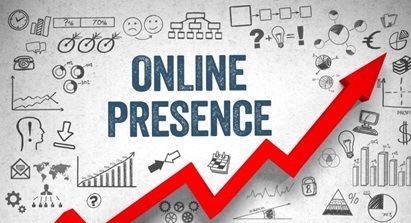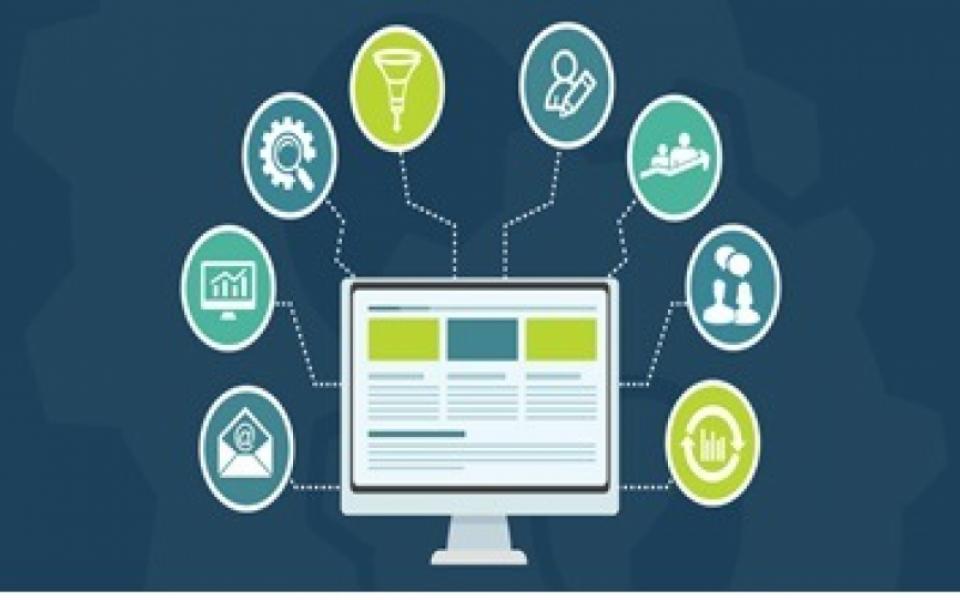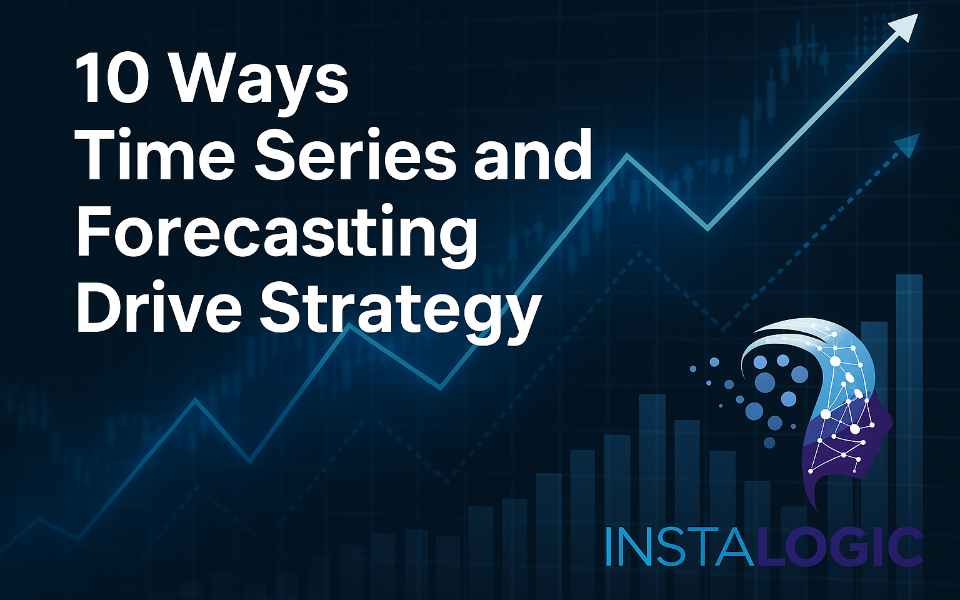A Process Oriented approach to digital marketing makes it more effective and impactful. The main advantage of digital marketing over traditional marketing is real time optimisation of campaigns and process oriented approach makes it easier.
“The modern marketer is an experimenter, a lover of data, a content creator, a justifier of ROI” – Kim Walsh

In today’s technologically advanced world, digital marketing is the new way to promote and sell products. It can be seen as a new philosophy and business practice emerging with improvements in technology. Goods, services, and even ideas and information can be marketed using the internet today. Digital marketing is, as the word suggests, the use of digital media to market products.
Step 1 - Build the Web Presence and plan Online Business Strategy
If your business is not on the internet, then your business will be out of the business” – Bill Gates
The new world is digital! There is no doubt that in 2021 taking your business online is not just a choice, but a necessity. However, building an online presence is more than just creating a platform that consumers can visit. In order to grow your business, you need to do things right. Company such as Airbnb has aced the game of Digital Marketing. They adapted a great Digital Marketing Strategy and had an enormous growth. In 2017 they came up with a non-discriminating “We accept” campaign as a response to the accusation that some of its hosts were discriminating against guests on the basis of race and gender. The results were powerful and moving.
For the effective online presence one can use Search Engines which includes optimization as well as marketing. Digital Advertisements and Email marketing are also some of essential tools that can be adapted to meet the goal of building an effective web presence.
To be a part of the Digital world you can register your business on local online directory, set up a social media page, indulge in online advertising and use websites and applications. Earlier all these tools were nothing more than an online brochure that described who, what and where but today these can do much more like research, chat with experts, buy things and many more activities.
While planning an online business strategy, it is necessary to have clearly defined goals and clearly articulated mission statement of what your business stands for. In order to understand where to focus your efforts online, doing Audience Segmentation and understanding consumer behavior by identifying customer touch points is of paramount importance. Generally while planning the online business strategy, companies try connecting to a customer following a framework that consists of four stages:
SEE > THINK > DO > CARE
Step 2- Make Search work for you and improve Search Campaigns
"Success usually comes to those who are too busy to be looking for it” – Henry David Thoreau
Search Engines are uniquely powerful tools for any business. They exist to discover, understand, and organize the internet's content in order to offer the most relevant results to the questions searchers are asking. In order to show up in search results, your content needs to first be visible to search engines. It's arguably the most important piece of the SEO puzzle: If your site can't be found, there's no way you'll ever show up in the SERPs (Search Engine Results Page). Google, Bing, Yahoo, Ask.com, etc are some of the examples of Search Engine.
Talking about the Search Engines, Search optimization is an essential marketing strategy for brands trying to attract attention, drive website traffic, and grow their business in unpaid search result. Search Engine Marketing on the other hand is often considered the part of search marketing that uses PAID tactics to gain visibility in SERPs. A paid SEM strategy includes both the activities involved with setting up and optimizing ads as well as setting a budget that pays for the placement of ads. It consists ‘Pay-per-click’ advertising.
Using proper Keywords and back links, making web pages search friendly and emphasizing cross borders with search engines form an integral part of this operation. In order to improve the search campaigns business should focus on achieving relevance with good structure. This can be done by creating good and precise Headlines, appropriate landing pages, Campaigns and Ad groups.
Step 3- Use multiple platforms to market the products and services
"Don’t be afraid to get creative and experiment with your marketing” – Mike Volpe
Peter Drucker famously wrote, “Management is doing things right; leadership is doing the right things.” But what are the “right things?”
It’s not hard to see. Companies of all sizes are trying their hand on multiple platforms for their customers. They have talented marketers that are working hard to create and share relevant content in a constantly changing digital marketing landscape. The most effective way to ensure that you are doing the right marketing is to focus on your brand. Create a brand strategy that clearly articulates where you play, how you win, and how you want to be known. And then you can choose the tactics and tools that will help you do the right marketing. Take the example of one of the biggest Multinational Financial Service Corporation, American Express. In 2020, it rolled out its largest ever global shop small campaign with a $200 million commitment to help jumpstart spending at small business hurt by the pandemic. It is also teaming up with Pinterest to launch the first-ever digital Shop to drive consumer awareness and support for independent businesses nationwide, which are increasingly adopting digital platforms to sell their goods. This has resulted in generating brand awareness and promotion of products through different platforms.
For Marketing purpose multiple platforms can be used.
1. Social Media
This offers wide range of customers to the business. This can further be classified as Personal Networks such as Facebook, Instagram, Professional Networks such as LinkedIN and Sharing Networks such as Trip Advisor, Zomato, etc. The objectives should be clear and content needs to be customized.
2. Mobile Website and Applications
This can be used as an effective compliment to the other marketing campaigns. It helps in increasing customer loyalty and makes the purchase process quite easy. It can also integrates with mobile features like GPS which later can be useful while working on analytics.
3. Content Marketing
It is based on creation and sharing of online material with a goal to increase the interest in a product and service. This can be done in different forms:
· Infographics
· E-books
· Videos
· Press releases, webinars, case studies, etc
There are four main purposes to create the content:
· To Entertain
· To Inspire
· To Educate
· To Convince
A good content marketing should succeed in doing three things:
· Answering your audience’s question
· Providing something of value
· Keeping them wanting more
Step 4 - Get started with Analytics and turn data into insights

“In the end you should only measure and look at the numbers that drive actions, meaning that the data tells you what you should do next” – Alex Peiniger
Doing the same thing over and over and expecting different results is the definition of insanity. So, it's even crazier to create and execute on a marketing plan time and time again without checking the results. Analytics is the practice of measuring and studying performance data to gauge the value and success of your marketing efforts. The most relevant example these days is that of Spotify. It uses big data gathered from listeners to improve user experience. It procures data points and use it to train algorithms The algorithm examines the playlists of other users to determine the similarities among tracks and then adopts that data for developing a fresh playlist that aligns with the prevailing track preferences of the user.
To use analytics effectively, first you have to know the goals of your business. Once you know the goals, follow these steps:
- Define the key performance indicators (KPIs) to reach your goals.
- Determine who will be responsible for collecting and reporting on the data consistently — such as monthly or quarterly
- As you start to capture data, decide which benchmarks will determine success — like previous quarters or an industry average
4. Set incremental percentage point improvements in key KPIs as well as a target date, month or quarter to reach those numbers
Data can be classified into two parts, Quantitative and Qualitative data. To turn data into useful insights we need to understand the data cycle
Plan > Do > Check > Act
Step 5 - Take Corrective Action based on Insights
The last yet important step is to take corrective action based on insights drawn from the data. The optimisation process is like Kaizen and is never ending.
Digital marketing majorly helps all businesses, big and small, take off. It is vital in this day and age and even helps with the employment problem. This form of marketing is how one can take advantage of technology and further their business. But it is also crucial for users to be careful of what information is put out on the internet to stay safe. There must be a balance of both, and companies should be taxed on the amount of data they have.
________________________________
Brief Profiles
Dr Anand Sapre is Former Director, IIPS Indore
Dr Amit Nagpal is Storytelling & Personal Branding Coach and Visiting Professor.
Kajal Tejwani is an MBA first year student at BIMTECH.

































